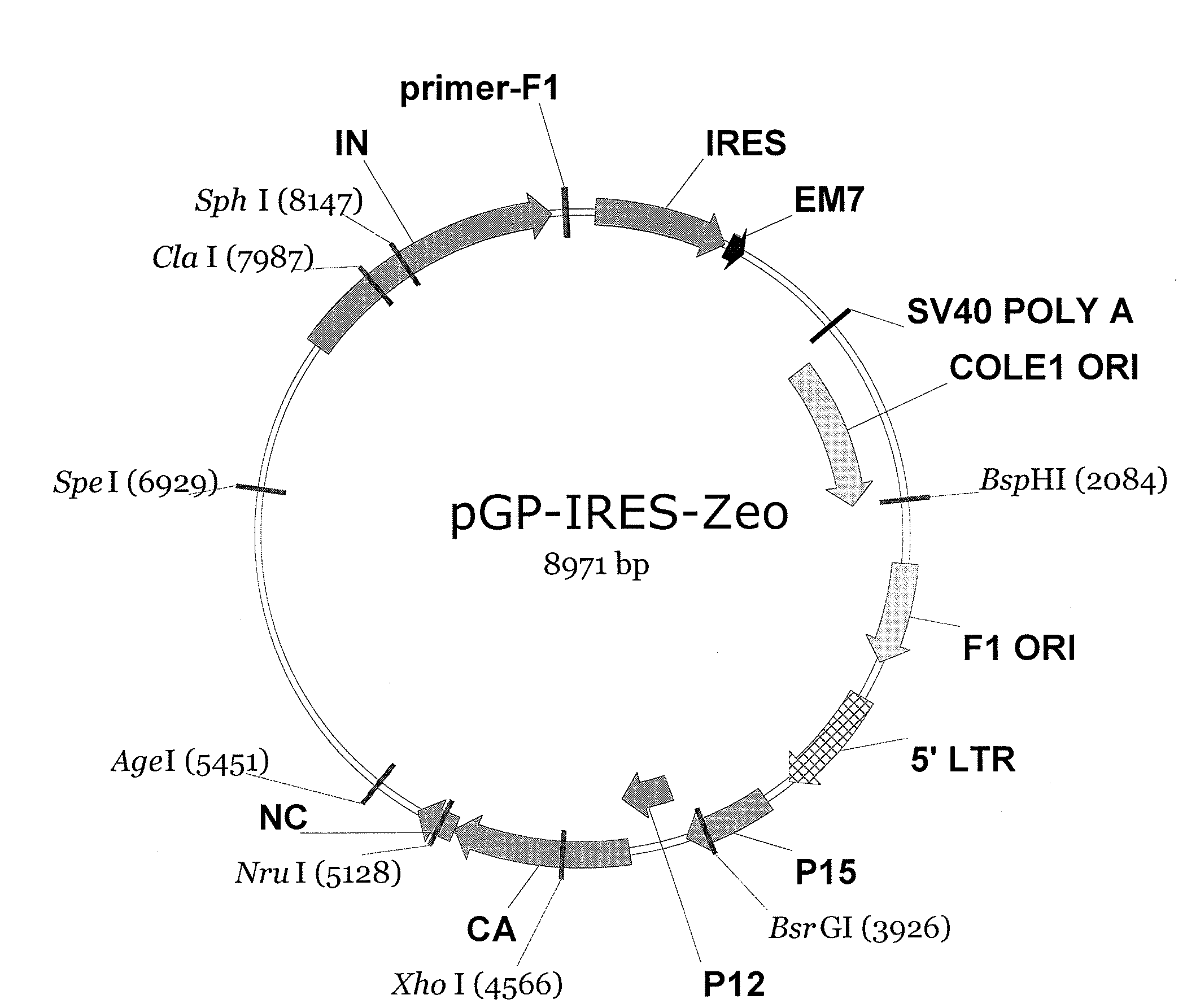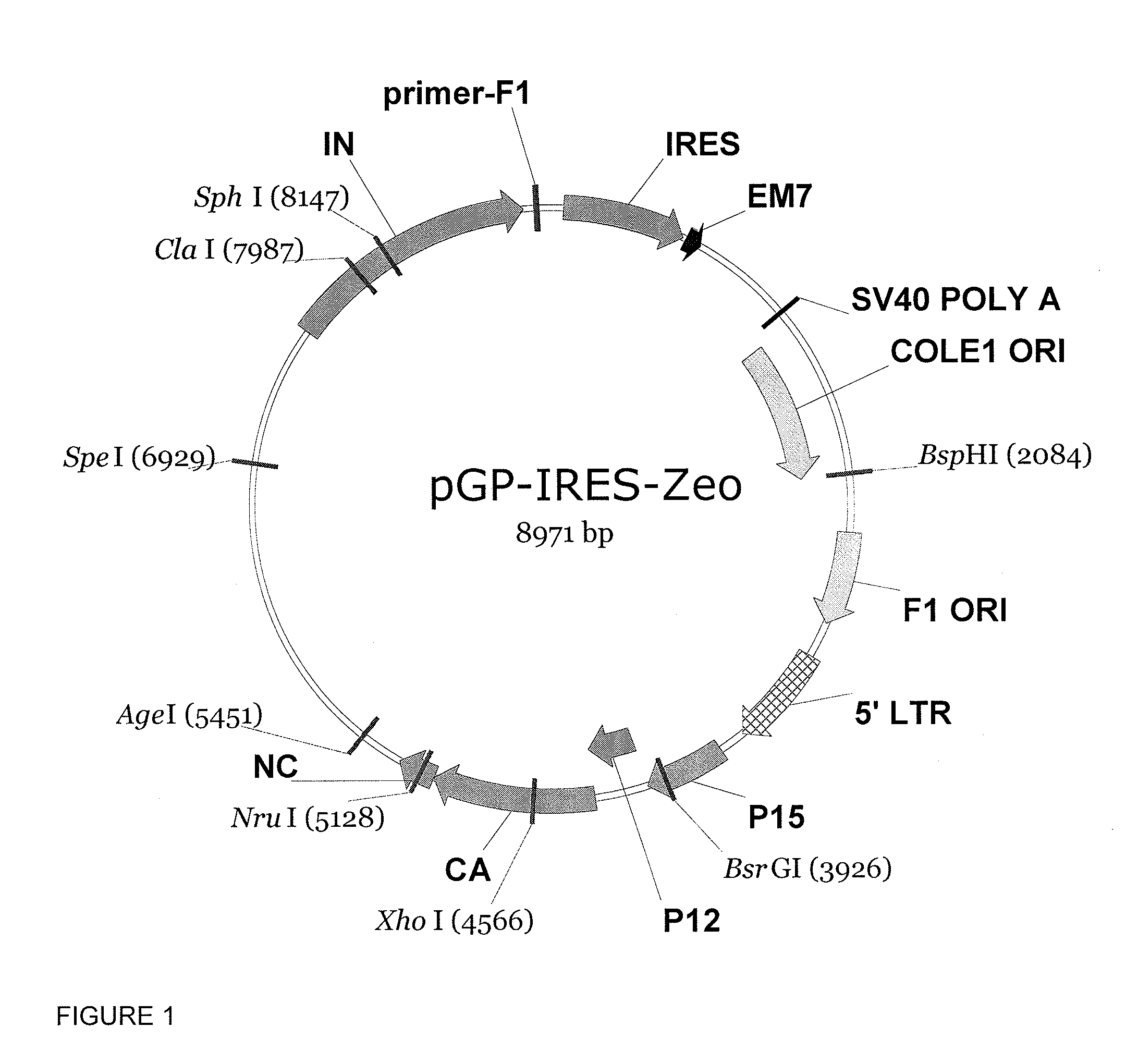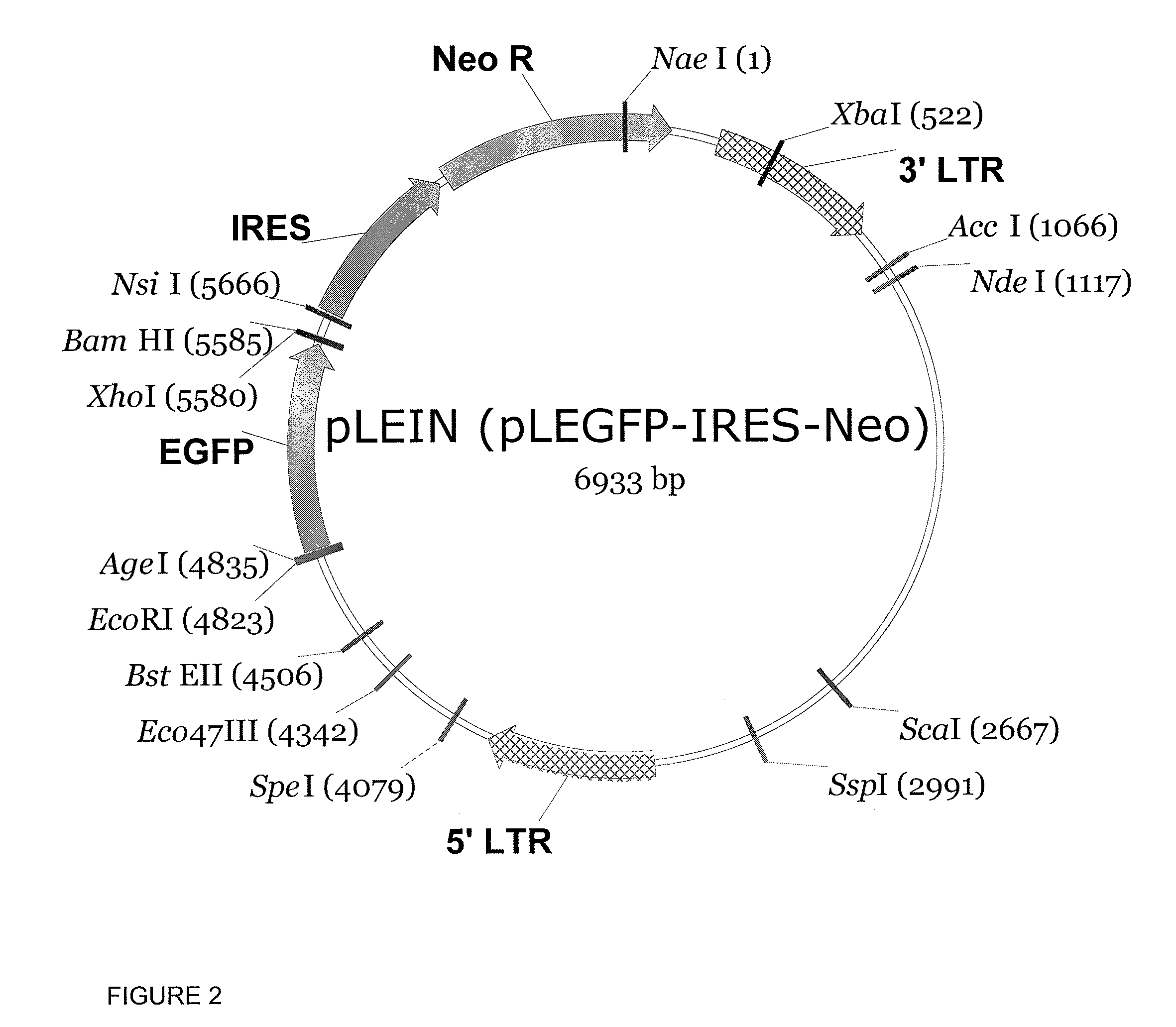Momlv-based pseudovirion packaging cell line
a technology of pseudovirus and packaging cell line, which is applied in the field of momlv-based pseudovirus packaging cell line, can solve the problems of cumbersome use of current pseudovirus packaging system, inability to produce a large number of particles, and inability to meet the needs of high-throughput laboratory research
- Summary
- Abstract
- Description
- Claims
- Application Information
AI Technical Summary
Benefits of technology
Problems solved by technology
Method used
Image
Examples
example 1
Making of pGP-IRES-Zeo
[0101]The plasmid containing Moloney Murine Leukemia Virus (MoMLV)-based helper virus, pPAM3 (Fred Hutchinson Cancer Research Center, Seattle, Wash.), was digested by AflIII to remove the env gene, followed by Klenow treatment and self-ligation to generate pGP. A 2.8-kb DNA fragment consisting of the IRES-Zeo expression cassette, SV40 poly(A) signal, bacterial replication origin (ColE1 Ori), and phage replication origin (F1 Ori) was excised from pIRES-Zeo (Young, W. B. and C. J. Link, Jr., 2000) by Eagi digestion, subjected to Klenow treatment and that digested with XbaI. This 2.8-kb IRES-Zeo fragment was subsequently ligated into pGP to generate pGP-IRES-Zeo. The resulting chimeric helper virus plasmid, pGP-IRES-Zeo, allows selection with Zeocin in bacterial culture and mammalian cells.
example 2
Making of pLEGFP-IRES-Neo
[0102]The LEIN retroviral vector carrying an EGFP reporter gene was constructed by replacing the SV40 promoter-neomycin phosphotransferase gene (Neor) cassette of pLESN (Mazo, I. A., et al., 1999) with a 1.4-kb IRES-Neo cassette, excised from pIRES-Neo (Clontech, Mountain View, Calif.) by Nael and NsiI digestions.
example 3
Making of Packaging Cell Line
[0103]The pLEGFP-IRES-Neo (8.3 μg) replication-defective genome vector was linearized with ScaI and transfected into pGP-IRES-Zeo cells using a standard calcium phospate transfection protocol and reagents (37° C., 5% CO2). Transfected GP293 cells were placed under G418 selection (DMEM, 10% FBS, 2 mM L-Glutamine, 0.6 mg / ml G418) 48 hours post transfection to select for those clones that had stably integrated the replication-defective genome. The selected clones were maintained under selective growth conditions (37° C., 5% CO2). A single cell sort of those clones was performed. From 192 potential clones, 24 showed significant EGFP activity. High-throughput transient transfections of those 24 clones with the LV-GP expression plasmid pPreGPCcDNA3.1 were performed. Transductions of 293T cells using medium from these twenty-four transfected clones were then performed. From the original 24, two clones, pLEGFP-IRES-Neo GP293 1F5 and 2E6, were selected as prototy...
PUM
 Login to View More
Login to View More Abstract
Description
Claims
Application Information
 Login to View More
Login to View More - R&D
- Intellectual Property
- Life Sciences
- Materials
- Tech Scout
- Unparalleled Data Quality
- Higher Quality Content
- 60% Fewer Hallucinations
Browse by: Latest US Patents, China's latest patents, Technical Efficacy Thesaurus, Application Domain, Technology Topic, Popular Technical Reports.
© 2025 PatSnap. All rights reserved.Legal|Privacy policy|Modern Slavery Act Transparency Statement|Sitemap|About US| Contact US: help@patsnap.com



